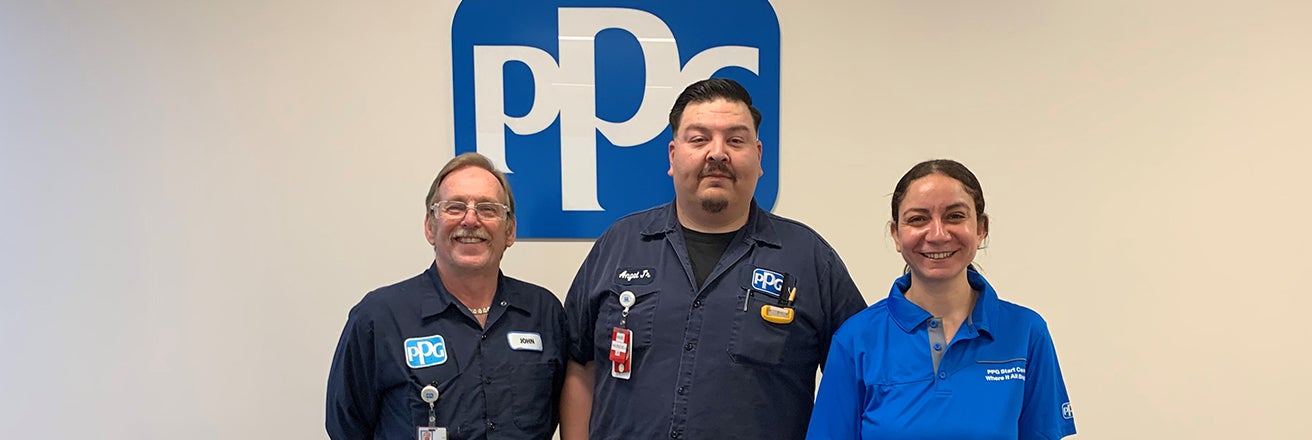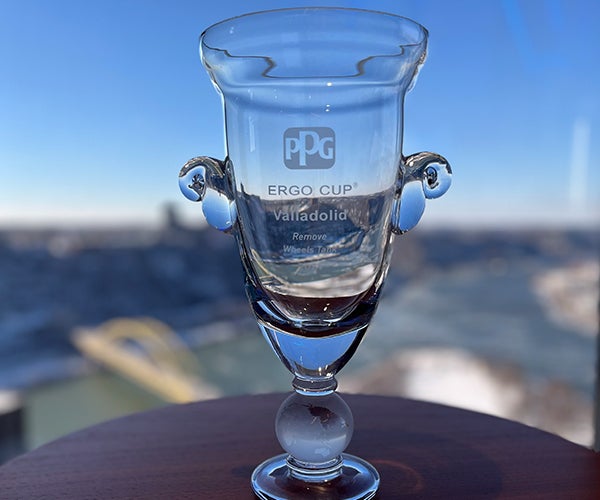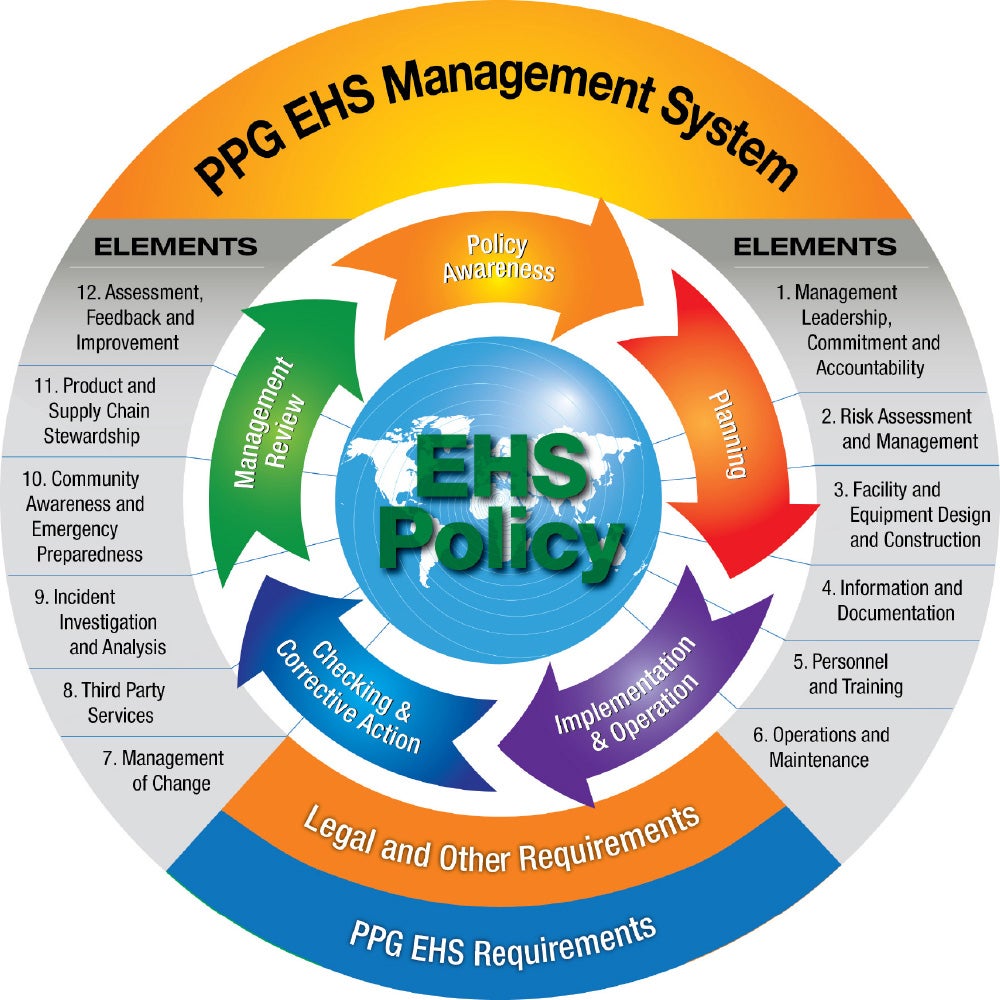*Decrease in ISO 14001 certificates from prior year is a result of the divestiture of the architectural coatings U.S. and Canada and silicas businesses.
Focusing in on critical sites
In 2024, our Environment, Health and Safety (EHS) team launched a new safety maturity model that enables us to prioritize critical sites using a risk-based approach. To support the identification of critical sites, we categorized our manufacturing locations based on existing EHS maturity and inherent risk factors. EHS maturity was calculated using a selection of lagging and leading indicators, with greater weight given to indicators that relate to incident prevention. Inherent risk ratings were determined using our Facility Risk Index Tool, which evaluates risk at each facility based on:
- Product portfolio
- Regulatory requirements
- Process safety applicability
- High risk activities
- Environmental regulatory complexities
Based on these criteria, our global sites were placed on a risk matrix to support prioritization, with critical sites being those that exhibited both relative high inherent risk and low EHS maturity. Our analysis identified that critical sites have an outsized impact on our overall incident rate and that EHS maturity directly correlates to incident frequency and resilience. Furthermore, we found that site safety performance is highly dependent on site culture and operations ownership – underscoring the importance of fostering a culture of safety.
To improve safety performance across our critical sites, we launched an EHS maturity improvement process that includes three key phases:
- Calibrate: We conduct site visits to understand and evaluate EHS processes and cultural programs at the department level.
- Build roadmaps: We identify areas for improvement, develop department-specific roadmaps, and identify ongoing support and resource requirements.
- Improve culture: We help our sites move beyond basic compliance and toward a proactive and mature culture of safety.
Transitioning to a more precise and data-driven approach has already driven a significant reduction in our overall incident rate, and we expect further reductions in 2025 as sites continue to improve their culture of safety.
Incident review and reduction
PPG conducts a detailed root-cause analysis for all process safety incidents. In 2024, we focused on reducing incidents related to the use of powered industrial trucks, ergonomic issues and slips, trips and falls – which account for nearly 45% of PPG's total incidents. To mitigate risks related to these activities, our EHS and Operations teams implemented ergonomic improvements, educational and cultural initiatives, and process improvements. As a result of these efforts, our injury and illness rate across these activities fell by more than 16% in 2024.
Our Operations and EHS teams partner to foster a culture where PPG employees are comfortable reporting elements of their job that may lead to injuries in the future. The PPG Global Code of Ethics emphasizes the need to speak up when people see safety concerns or violations. Where issues are identified, we prioritize systemic changes rather than encouraging additional training. This approach enables learning for everyone working in our facilities, rather than focusing on the individuals involved in an incident.
We continued to work to reduce our average response time for processing safety incidents and implementing mitigation measures. The Operations and EHS teams track the percentage of follow up actions closed within 90 days and continue to improve our performance year on year. In 2024, 92% of follow up actions were closed within 90 days.
Avoiding serious incidents
Our Operations and EHS teams take a proactive approach to minimizing the likelihood of serious incidents and fatalities (SIFs). When reviewing incidents, we prioritize our follow-up actions based on the actual and potential severity of injury. In 2024, we reviewed three SIF events, and more than 422 minor injuries that were classified as potential SIFs.
While our central EHS team was addressing the processes that led to actual and potential SIFs, we recognized an opportunity to improve our approach by providing additional training for regional and site managers focused on avoiding SIFs. Based on these findings, we implemented programs at the site level to ensure that everyone at PPG understands how to identify hazards that might lead to SIFs in the future.




